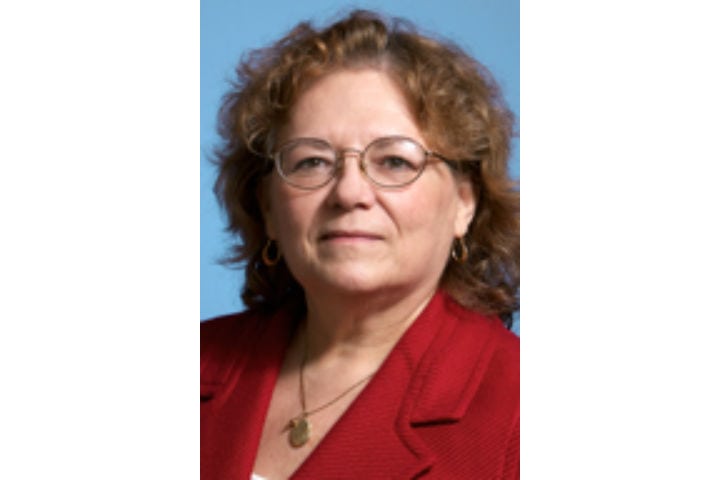Education Development Center Managing Project Director Joyce Malyn-Smith is an expert in K–12 STEM education, workforce development, and trade displaced worker training. In this post, she discusses how to foster a strong future workforce. Follow EDC on Twitter at @EDCtweets.
Over the past 50 years, we have watched technology forever change the ways we live, learn, and work. These changes have been dramatic and the pace frenetic. Pondering the bold ideas that have swiftly become realities, we cannot imagine the inventions that will become as common as a smart phone or car GPS. Complicating things more, many assert that we are at the forefront of a new frontier where discoveries and innovation will focus on interdisciplinary efforts to optimize the integration of humans and machines.
We cannot predict all of the new jobs that will emerge to keep pace with these innovations. Yet, as we consider today’s rapidly evolving high-tech world, it is clear that all of our youth will need a degree of computer fluency to succeed in the workplace and in life. That means we need to take swift, strategic action now to ensure all youth have the core competencies they need to meet the skill demands of tomorrow’s workforce and to help the U.S. retain its position as a global leader in discovery and innovation.
Preparing All Youth for a New World of Work
From EDC’s almost 60 years of advancing STEM education, we know that when computer scientists design new software and hardware, they change the way that daily work gets done and shape the boundaries and limits of discovery and innovation across all fields. Computer scientists are critical to a strong and secure future—but they are not the only workers needing CS skills. We need to rebuild our PreK-16 education system to make sure our country can produce:
- Digitally literate citizens, learners, and workers
- Computing enabled professionals who are ready to discover and innovate in interdisciplinary teams in all industry sectors—agriculture, manufacturing, medicine, criminal justice, finance, you name it
- Computer scientists with the right skills to continuously redefine the boundaries of discovery and innovation across all fields
When given opportunities to learn CS, today’s youth tend to transition from being digitally literate to computing enabled professionals and computer science students along a Use-Modify-Create skills progression. Once they become expert users of a technology, they begin to modify the technology to fit their personal needs/interests. When they become expert at modifying the technology, they begin to create their own. Each phase of this skills progression brings them closer to where they will land in the workforce—a digitally literate worker with essential computer fluency, a computing enabled professional, or a computer scientist.
Our challenge: How do we engage the largest numbers of students in STEM and CS courses where they can build their Use-Modify-Create skills and develop their interests and capacities to persist in and along pathways to CS and CS-enabled careers? How do we help youth gain the skills, knowledge, and dispositions they need to succeed in a world driven by technology?
On April 3, EDC and our partners Code.org, Education Commission of the States, Expanding Computing Education Pathways, and SageFox Consulting Group released a new report that helps answer these questions. State of the States Landscape: State-Level Policies Supporting Equitable K–12 Computer Science Education tracks policy progress in creating strong CS Ed systems. The report is part of a PreK-16 CS Ed initiative that EDC is leading as part of our domestic STEM education and youth and workforce development efforts to foster CS fluency.
How to Get There: On Ramps and Roadmaps to CS Fluency
Building CS-fluency starts very early on, when youth begin to use technology devices long before they enter high school. It requires the state-level policy work that we describe in our new report, as well as effective professional development for teachers. It also calls for new enhancements to PreK–12 education that include weaving opportunities to build computational thinking skills into the curriculum, as well as expanding access and interest in computer science.
Roadmaps that guide schools, districts, and states in navigating this kind of systems change work are key. Two important kinds of roadmaps to build CS fluency are state standards and a framework to integrate computational thinking (CT) into the curriculum.
Developing and Adopting State Standards
A uniform set of agreed-upon standards that identify what learners need to know and be able to do is an effective way to make broad-based change happen as rapidly as possible. In Massachusetts, through EDC’s work leading the Massachusetts Computing Attainment Network (MassCAN), EDC’s Jim Stanton (MassCAN Executive Director) and I collaborated with senior staff at the Massachusetts Department of Elementary & Secondary Education and MassCUE to facilitate the development of the state’s K-12 Digital Literacy and Computer Science Standards.
The process involved reviewing related standards and developing a framework that outlined what “Digital Citizens and Lifelong Learners,” “Computing Enabled Professionals,” and “Computing Professionals” need to know and be able to do. From there, we backtracked to what K–5, 6–8, and 9–12 students need to learn to gain key digital literacy, CS fluency, and CT skills. We developed learning progressions and key practices to master for all grade ranges.
Engaging key stakeholders and the public helped to gain broad-based support for the standards.
- Key Stakeholder Engagement: We formed a review panel, representing diverse perspectives and drawn from communities across the state, to guide the work. The panel included 16 teachers from elementary schools, middle schools, high schools, charter schools, and vocational schools; 5 administrators; 7 representatives from higher education; and 12 representatives from businesses and organizations—including a high school student who has started his own computer science game company. This group met six times over the course of a year and a half and provided invaluable input on the standards every step of the way. Draft standards were accepted by the Massachusetts Board of Education.
- Public Engagement: Through the state Board, we released draft standards for public review and comment, and incorporated the feedback we received into the final version of the standards. We received comments from the general public, the field, and external organizations with expertise in digital literacy and computer science.
The collaborative process was essential to completing this roadmap. As I write this blog, Massachusetts is one of only seven states to have developed and approved K–12 CS standards. The Mass. Board of Education adopted the standards in the summer of 2016, and now a multi-sector work group is using the standards to consider options for new K–5, 6–8, and 9–12 Digital Literacy and Computer Science licenses/endorsements.
Reaching Everyone: Framework to Integrate Computational Thinking into Everyday Learning
There is growing recognition that strong computational thinking (CT) skills give students a key set of tools for success in school and an edge at work in all industry sectors in a high-tech world, from how to break down and solve problems to successful data-based decision-making. Yet it is not enough to recognize that CT skills are important and provide a few neat experiences to a few lucky students. Our challenge: How do we systematically make sure that all students have opportunities to build these skills?
EDC has been working on this issue for over a decade. We began by developing an understanding of what CT looks like at work and when youth are engaged in school and out-of-school time activities. Next, we published white papers, created the first profile of what a CT-enabled professional needs to know and be able to do, and explored the work of the CT Integration Specialist. Now, as part of our PreK–16 CS Ed initiative, we are identifying strategies to foster computational thinking of students in preschool through grade 6, working to discern how CT needs to be included in schools to build students’ core CT competencies, and developing a framework for integrating CT from a disciplinary perspective.
In all of these efforts, we are tackling the urgent need to advance research—and bridge research and practice—so that all youth can access opportunities to develop the CT tools they need to advance in school and succeed at work. Right now, CS or technology educators engage a small number of students in CT through traditional CS/coding activities. Again this is not enough. The way to reach all students is through the disciplines. In August 2017 and November 2017, EDC will engage colleagues and stakeholders—researchers, K–12 educators, and disciplinary teachers—in a national summit to identify effective strategies to support K–12 students’ CT from a disciplinary perspective. Together, we will work to answer the question: What is the role of classroom teachers in helping students develop CT skills? Participants will develop a theoretical framework—a new roadmap to help the field give all students a CT toolkit—reports, and articles that advance knowledge of evidence-based approaches to weaving interdisciplinary computational thinking into K–12 education and assessing computational thinking. We look forward to sharing these resources and roadmap with the field.
Shaping Our Future
Building a Next Gen Workforce capable of discovery and innovation in an unclear, technology driven future is well within our grasp and must start now with adopting state standards for CS, and supporting the development of CT skills within all disciplines. Taking these two steps will help us sustain systems that ensure all students have opportunities to develop the core CT skills and CS fluency they need to become technology leaders and architects of the future, not just consumers of technologies who live in the shadows of others’ ideas. The real question is: In this new era of discovery and innovation, do we want our workforce to lead, rather than be followers? If so, what are we going to do about it?






